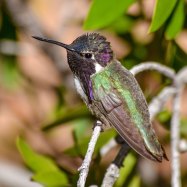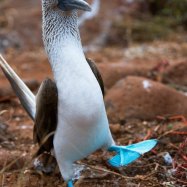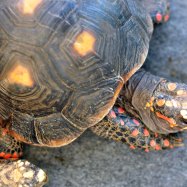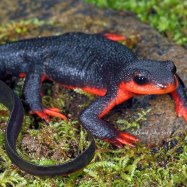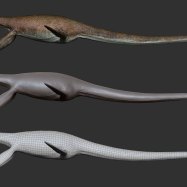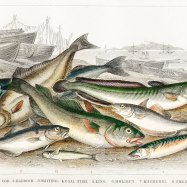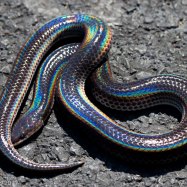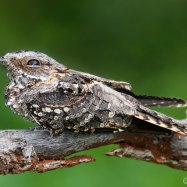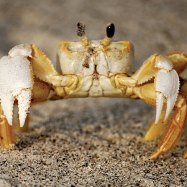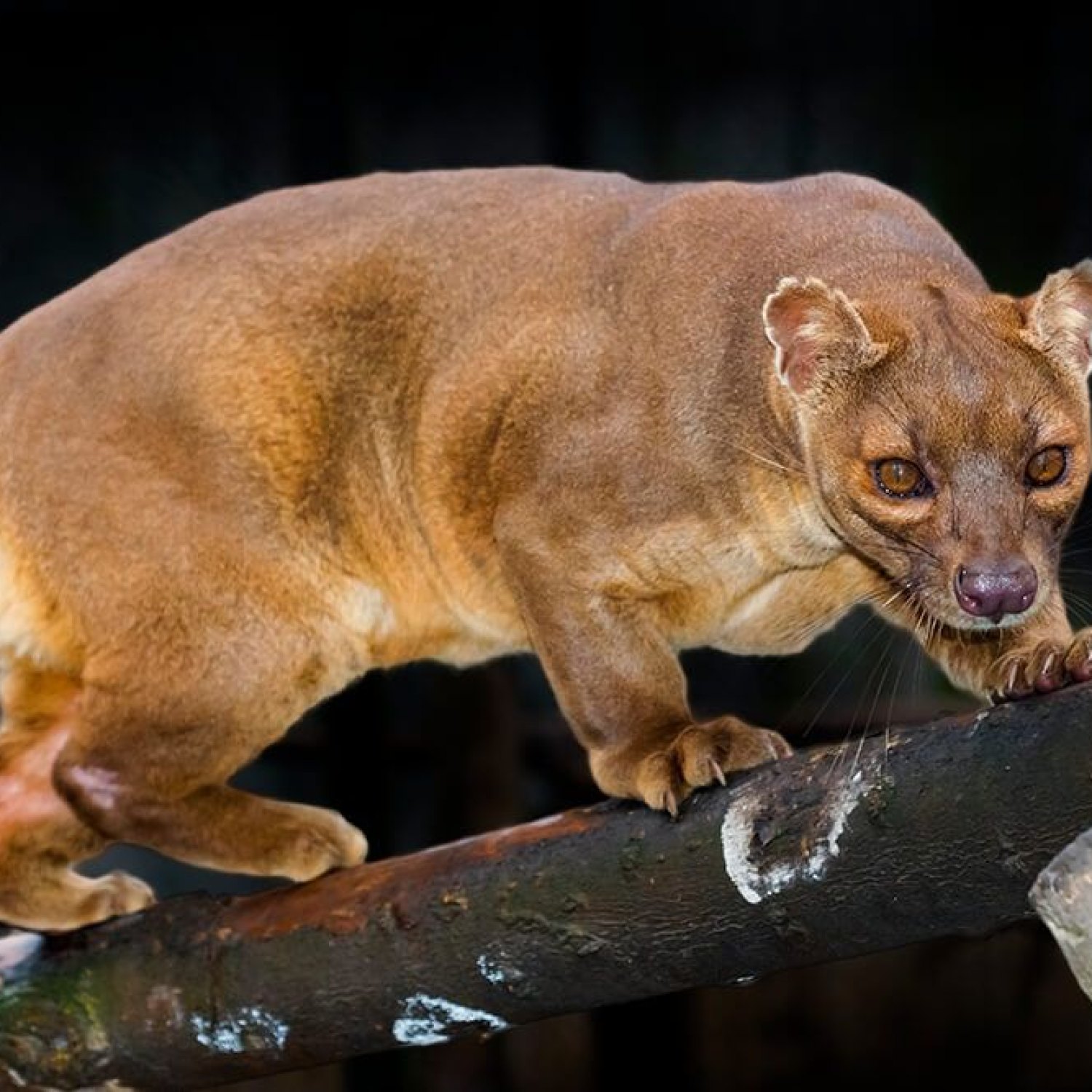
Fossa
70-90 cm
The fossa, a slender and elongated animal found in Madagascar, belongs to the family Eupleridae. With a body length of 70-90 cm, it has unique features such as retractable claws and excellent climbing abilities. These elusive animals are primarily carnivorous, and they play a crucial role in the ecosystem of Madagascar. #Fossa #Madagascar #Eupleridae #Carnivore
Animal Details Summary:
Common Name: Fossa
Kingdom: Animalia
Habitat: Rainforest
The Fierce and Elusive Carnivore of Madagascar: The Fossa
Deep within the lush and mysterious rainforests of Madagascar, there lies an animal shrouded in both beauty and ferocity - the Fossa. This unique and lesser-known animal may not be as famous as the lemurs of Madagascar, but it certainly deserves equal attention and recognition.The Fossa, also known by its scientific name Cryptoprocta ferox, is a remarkable mammal that belongs to the Eupleridae family and the Carnivora order. Its long, slender body, and distinct brown fur make it easily distinguishable in its natural habitat Fossa. The Fossa is an apex predator and feeds on a wide range of prey, earning its title as a fierce carnivore.
Let's take a closer look at this mesmerizing animal and uncover its physical appearance, behavior, and significance in its natural environment.
Physical Appearance
The Fossa is a medium-sized animal, with a body length ranging from 70-90 cm and a tail length of approximately 65 cm. It has a slender and elongated body, with powerful limbs and sharp claws, making it an agile hunter. The Fossa's fur is short and dense, with a dark reddish-brown color that helps it blend in with the rainforest environment.Apart from its physical features, the Fossa also has a unique dental anatomy, with sharp pointed teeth and strong jaws, specifically designed for tearing through flesh and bones. Its large, piercing eyes and pointed ears give it excellent vision and hearing, enabling it to navigate through the dense vegetation with ease.
Habitat and Distribution
The Fossa is endemic to the island of Madagascar, making it a unique and exclusive species. It is known to inhabit the rainforests and woodlands of the island, where it can thrive and hunt for its prey French Bulldog. The Fossa is also highly adaptable and has been observed in various altitudes, ranging from sea level to over 2,000 meters.In recent years, the Fossa's habitat has faced significant threats due to deforestation, leading to a decline in its population. It is estimated that there are only about 2,500 Fossas left in the wild, making it a vulnerable species. Conservation efforts have been put in place to protect its natural habitat and promote sustainable practices to ensure its survival.
Diet and Feeding Method
As a carnivorous animal, the Fossa is a skilled and efficient hunter, preying on a wide range of animals, including lemurs, small primates, birds, insects, and reptiles. Its slender body and sharp claws enable it to climb trees and hunt for prey both on land and in the air, making it a formidable predator.The Fossa's hunting technique is stealthy and strategic, as it patiently waits for its prey, striking with lightning speed and precision. Its sharp teeth and powerful jaws allow it to devour its kill efficiently, leaving nothing to waste.
This efficient predator plays a vital role in the ecosystem by controlling the population of its prey, ensuring a balance in the delicate web of life in the rainforest.
Behavior and Social Structure
Due to the elusive nature of the Fossa, not much is known about its behavior and social structure. However, researchers have observed that it is mainly solitary, except during the mating season. Males and females come together for a brief period to mate, after which they go their separate ways.The Fossa is primarily active at night, making it a nocturnal animal, but it has also been spotted during the day, especially in cooler weather. Its solitary nature and elusive behavior make it challenging to study and track, which adds to its air of mystery and allure.
Significance in Madagascar
The Fossa is an essential and unique animal in Madagascar's ecosystem, playing a crucial role in preserving the rainforest's delicate balance. As a top predator, it controls the population of its prey, preventing overgrazing and the depletion of resources.Apart from its ecological significance, the Fossa also holds cultural and spiritual significance for the Malagasy people. They believe it to be a sacred animal, with some considering it a symbol of strength and power.
Moreover, the Fossa has also become a symbol of conservation efforts in Madagascar, as policymakers work towards preserving its habitat and protection to ensure its survival for generations to come.
Conclusion
The Fossa is a unique and fascinating animal that adds to the rich diversity of the island of Madagascar. With its physical strength and agility, fierce hunting skills, and elusive behavior, it evokes a sense of awe and admiration in those who have been fortunate enough to catch a glimpse of it.As we strive towards protecting and preserving our planet's biodiversity, the Fossa serves as a reminder of the delicate balance of nature and the need for sustainable practices in maintaining it. Let us continue to celebrate and appreciate the beauty and significance of animals like the Fossa and work towards ensuring their survival for future generations.

Fossa
Animal Details Fossa - Scientific Name: Cryptoprocta ferox
- Category: Animals F
- Scientific Name: Cryptoprocta ferox
- Common Name: Fossa
- Kingdom: Animalia
- Phylum: Chordata
- Class: Mammalia
- Order: Carnivora
- Family: Eupleridae
- Habitat: Rainforest
- Feeding Method: Carnivorous
- Geographical Distribution: Madagascar
- Country of Origin: Madagascar
- Location: Madagascar
- Animal Coloration: Brown
- Body Shape: Slender and elongated
- Length: 70-90 cm
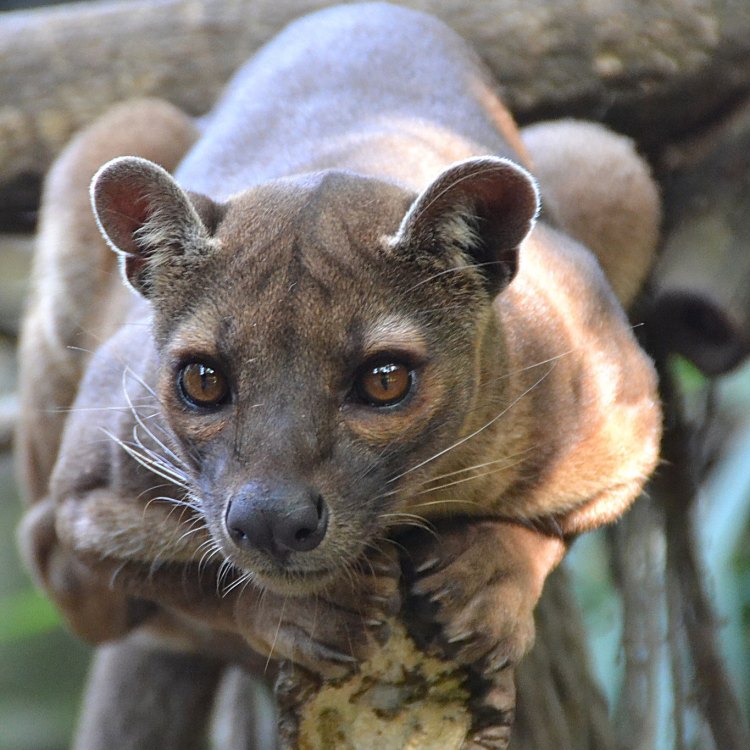
Fossa
- Adult Size: Medium
- Average Lifespan: 15-20 years
- Reproduction: Sexual
- Reproductive Behavior: Polygamous
- Sound or Call: Various vocalizations including chattering, purring, and yowling
- Migration Pattern: Non-migratory
- Social Groups: Solitary
- Behavior: Nocturnal
- Threats: Habitat loss, hunting, and competition with other predators
- Conservation Status: Vulnerable
- Impact on Ecosystem: Important for maintaining balance as a top predator
- Human Use: None
- Distinctive Features: Long tail and sharp retractable claws
- Interesting Facts: Fossas are the largest carnivorous mammals in Madagascar
- Predator: None
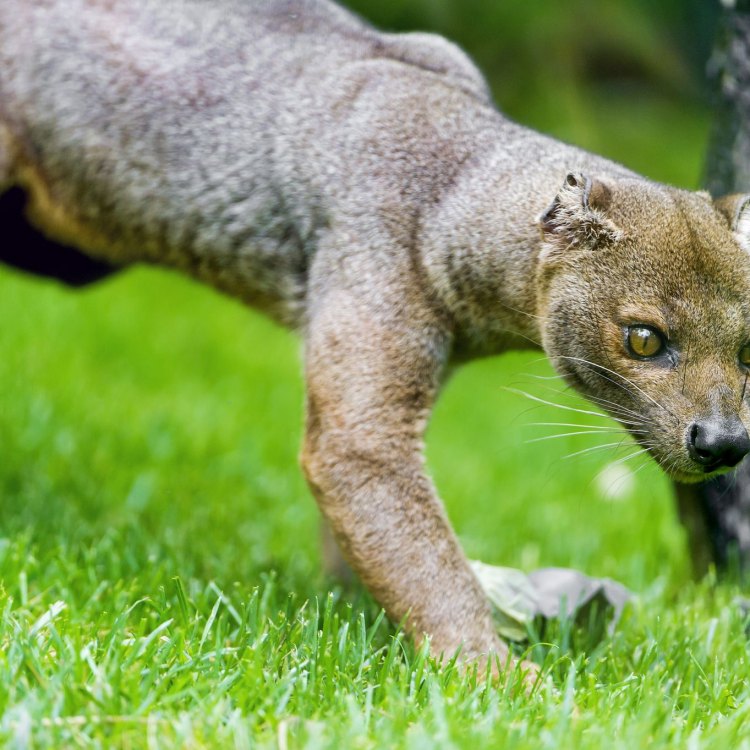
Cryptoprocta ferox
Uncovering the Secrets of the Fossa - Madagascar's Elusive Hunter
In the dense jungles of Madagascar, hidden in the shadows of the trees, lives a creature shrouded in mystery and myth - the Fossa. This elusive predator is a true enigma, with very little known about its behavior and lifestyle. However, what we do know about the Fossa is enough to captivate our imagination and make us want to learn more about this fascinating animal.The Fossa, scientifically known as Cryptoprocta ferox, is a carnivorous mammal that is native to Madagascar PeaceOfAnimals.Com. It is the largest carnivore in the country and is considered a top predator in its ecosystem. The word "fossa" is derived from the Malagasy word "foon-tsia" which means "cat-like" - a fitting name for this feline-looking creature.
Admired for its graceful and agile movements, the Fossa has distinctive features that make it stand out among the other animals in Madagascar. It has a medium-sized body that can grow up to 1 meter (3.3 feet) in length, making it as large as a small dog. It can weigh up to 26 pounds, with males being larger than females. Its long, slender body is covered in short, brown fur with a creamy tan underside. Its glorious tail, measuring about 2 feet long, adds to its impressive appearance.
With an average lifespan of 15-20 years, the Fossa lives a solitary life and is mostly active at night, making it a nocturnal animal Firefly Ball Python. During the day, it takes refuge in tree hollows or leafy branches, keeping a watchful eye on its surroundings. Its excellent eyesight and powerful sense of smell help it hunt for prey, and its sharp retractable claws allow it to move swiftly through the trees.
Reproduction in Fossas is sexual, with a single male mating with multiple females during the breeding season, which occurs between September to February. Males reach sexual maturity at 1-2 years old, and females at 2-3 years old. After a gestation period of 90-105 days, females give birth to 2-4 cubs in a den hidden in dense vegetation. The cubs are born blind and helpless, and they rely entirely on their mother for the first six months of their lives. As they grow, she teaches them essential skills like hunting and climbing trees. By the time the cubs reach 1-1.5 years old, they leave their mother to live independently.
One of the most intriguing characteristics of the Fossa is its vocalization. They have various distinct vocalizations, including chattering, purring, and yowling. Their unique vocalizations serve as a form of communication within their solitary lifestyle. They also use scent marking to signal their presence and territory to other Fossas.
Although Fossas are solitary animals, they play an essential role in maintaining the balance in the ecosystem as top predators. They have a varied diet, which consists of lemurs, birds, reptiles, and smaller mammals. They are also known to hunt domesticated animals, such as pigs and poultry, which has caused conflict with local farmers in Madagascar.
Unfortunately, the Fossa's existence is threatened by human activities, including habitat loss, hunting, and competition with other predators. The destruction of their natural habitat for agricultural purposes has significantly reduced their population, making them a vulnerable species on the International Union for Conservation of Nature (IUCN) Red List. Additionally, their solitary lifestyle makes it difficult for researchers to study and understand their behavior, hindering conservation efforts.
Apart from humans, Fossas have no natural predators in Madagascar, making them the top of the food chain. This fact highlights their importance in the ecosystem, as their presence helps control prey populations' growth, preventing overgrazing and maintaining a healthy balance.
Despite their mysterious nature, there are some interesting facts about Fossas that we have uncovered. One of the most exciting facts is that they are the largest carnivorous mammals in Madagascar, making them a crucial part of the country's biodiversity. They are also excellent climbers, using their sharp claws and flexible body to move through the trees with ease.
In addition to their physical prowess, Fossas have remarkable teeth that can rotate up to 135 degrees, allowing them to bite and chew on large prey. This feature is unique among mammals and significantly contributes to their success as hunters.
Unfortunately, due to their solitary and nocturnal lifestyle, Fossas do not have any significant human use, unlike other animals in Madagascar. They are not kept in captivity as they do not adapt well to captive environments, making it difficult for scientists to study them up close.
In conclusion, the Fossa is a fascinating and highly unique animal that has captured the hearts of many wildlife enthusiasts. With its distinctive features, mysterious behavior, and crucial role in maintaining balance in the ecosystem, it is an animal worthy of admiration and conservation efforts. However, to ensure the survival of this elusive hunter, more research is needed to understand its behavior and address the threats it faces. If we do not take action now, this magnificent animal may disappear forever, leaving behind only myths and legends. Let us all join hands in protecting the Fossa and preserving Madagascar's biodiversity for future generations.

The Fierce and Elusive Carnivore of Madagascar: The Fossa
Disclaimer: The content provided is for informational purposes only. We cannot guarantee the accuracy of the information on this page 100%. All information provided here may change without prior notice.

